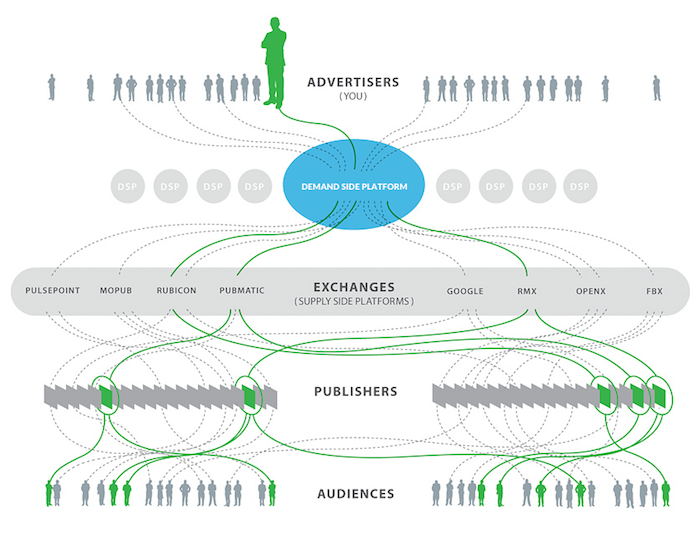· 8 min read
Launching a Mobile Game Business (Part 2)
Anthony Hurtado
Anthony Hurtado started his career in the mobile gaming industry in 2011. He worked at the investment firm behind Best, Cool & Fun Games, before joining Latin America’s biggest mobile games publisher as the Director of BD, where he launched a mobile ads network called RevMob. He remains involved in the gaming industry through research projects, consulting, and currently as the Director of Business Intelligence for Evus Technologies.
Editor’s note: This is the second of a 2-part series by Anthony Hurtado, a veteran of the mobile publishing and advertising industry. In this series, Anthony gives sage advice for anyone looking to break into the sector and launch their own mobile game business. To view part 1 of this series, click here.
Step 4: How To Get Users
So, you have selected your genre, you have figured out how lucrative your newfound audience can be, and you are excited. Let’s build that game, right?! WRONG. You need to figure out how you will get users.
In the early days of mobile games, it really was a “you build it and they will come”. This was supercharged by the bigger firms who would endlessly cross-promote, (and sometimes cut inner circle cross-promotional deals that just made the big guys, bigger).
For those who didn’t just organically grow there were always ad networks. Just buy a bunch of users for less than a dollar a pop. Great! Yet, with time the market has evolved and become such a complicated beast that to cover the mobile user acquisition landscape would be a series of long form blog posts. I won’t focus on the details to that regard for now.
Rather, I’m going to leave you with a 9-point mobile acquisition checklist:

Share these tips on Twitter…
[bctt tweet=”? 9 User Acquisition Tips for your Mobile Game #GameDev” username=”GameAnalytics”]
#1 Will you be buying your users? If so, how much do you project them to cost?
I would recommend using the following;
#2 Some fair things to ask
- What Cost-Per-Install (CPI) are you seeing for games like mine?
- Is the inventory exclusive to you?
Most of these players, ESPECIALLY the DSPs are all buying the same inventory
- Why you versus others?
- Minimum order (some will refer to this as an insertion order)
- What creatives do you need from me?

#3 Ultimately, you cannot create a great game by buying the audience
Buying an audience can be useful for keyword spiking, rank boosting, and just priming the pump, but overall it’s not a sustainable way to grow, and it’s cash expensive! So, it’s time for you to get creative on how you will drive organic installs:
#4 Game influencers
Many of these guys will charge, this may not be bad, but do the projected CPI math. Know their audience size, estimated actually viewed impressions, use conversion rate estimates, etc.
#5 Research using PreApps
Service that gets you beta testers and pre-launch registrations. Don’t expect a ton of traffic from here, but if in your first week you’re launching with a couple thousand people right off the bat that can help your Apple boost, so that you get more visibility and it just all snowballs from there. This plays in nicely with the game genre competition analysis you performed earlier. See, it all connects!
#6 Study viral loops

This is technically a design task, but you should know this stuff prior to designing it. The game designer will likely be well-versed in this subject matter, but honestly having a great game with good viral triggers will likely be your biggest organic boost. Shout to (books on virality, not directed at games, but I find them to be relevant);
#7 Know where your audience lives.
Would it make sense to do a Hulu campaign (unlikely), to learn game directories’s costs (worth reaching out to, but don’t expect much), attend a conference or college event (for a game, unlikely).
I’ll leave the organic commentary there for now. I’m not going to go into the micro-level detail on how to try and get Apple or Google to feature your game, or anything like that. This is all pre-design work; the marketing tasks will ramp up as you’re building your app and getting closer to launch. From a business planning perspective, these two tasks are sufficient.
#8 Define your audience as niche vs. mass-market.

A niche audience will rely more on organic growth and traditional word of mouth marketing. You’ll likely focus on blogs and media that serves this niche community. Study this community and serve it well.
A mass-market audience will be easier to get going through the traditional paid media routes, larger influencers, and their potential viral impact will be greater. Your projections should reflect all of this (and will be easier to make)
#9 Identify where they are playing today.
They should be playing games today, which ones are they. Study how those games grew. You may not find a playbook, but you can see their rank history and try to correlate that with new features, blog posts, a feature, or some other factor. You may even find that a DSP or ad network will allow you target based off apps already installed by users.
The key takeaway with this step is to put some thought into how you will get users. Will it be expensive to acquire them, how much? For how long do I imagine that I’ll have to be relying on paid media, versus organic growth? The end output should be a list of tasks (the next level of detail from the ones laid out above) and an estimate of the number of users and downloads you’ll have over the next 12-24 months.
Step 5: Review Your Model And Notes
After completing Steps 1-4 you know the type of game you’re going to build (and why). You know how you plan to make money from the game, and how you’ll get the users that will generate that money.
This is best materialized through a financial model that features:
- It’s going to be wrong and that’s OKAY. It’s the norm.
- Feature user estimates
- Installs
- Active users
- Sessions activity (necessary for ads and seen in learning more about your customer and the genre)
- Include revenue estimates
- Broken out by in app purchase and ad revenue
- Projected team and their associated
- Normal business costs
- THIS IS A BUSINESS AFTER ALL
A business case document is unnecessary. A Lean Canvas write up is optional. I don’t believe that you can overanalyze too much at this point. Some elements would have already been addressed and can be composed in an executive summary. Others are not as applicable to a mobile game, albeit a mobile game business.
The dynamics of the mobile game industry are a unique bunch. If you have successfully created a financial operating model you have though the business through, which is the inherent purpose of the Lean Canvas.
A lot has been written and not all of it has been in the most optimistic tone. Yet, hopefully there have been some good takeaways and actionable advice. If at the end of all this you’re still excited, motivated, and ready to start your mobile gaming business then hats off to you.
Step 6: Begin the Journey

Start the development process. Do your customer development (a bit different in gaming than the rest of Start-Upville), wireframing, design mocks, etc. If you’re not a designer – hire one.
Start the process of finding your technical talent. In your financial modeling and genre selection you should have already identified the likely skillsets necessary for doing your game right. If you have no idea as to how move forward on this technical part. That’s okay. There are hundreds of software development firms out there that would LOVE your business. They’re hungry for it and some may even give you an equity discount.
As it is, I work for a start-up studio. We are very picky on the projects we agree to co-create, as we strive to be truly vested partners. However, even if it isn’t a fit, I’d be happy to look at your project, give some feedback, and in the worst case recommend you to another development shop to whom I am comfortable recommending. If you’ve gotten this far, there are no excuses. So, get started on the journey. It’s gonna be a hell of a ride, but the destination is more than worth it.
Share these tips on Twitter…
Check out part 2 of “Launching a Mobile Game Business” on the GameAnalytics blog! https://t.co/9BbGEKIm58 #GameDev #IndieDev pic.twitter.com/ztj6CTPcRz
— GameAnalytics (@GameAnalytics) April 6, 2017
Editor’s note
To view part 1 of this article (steps 1 – 3), click here.